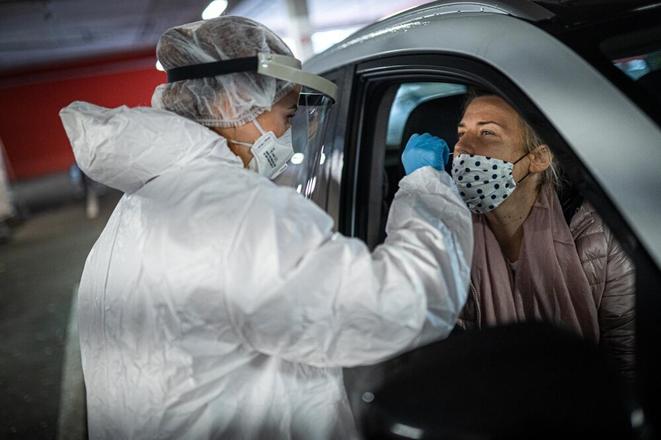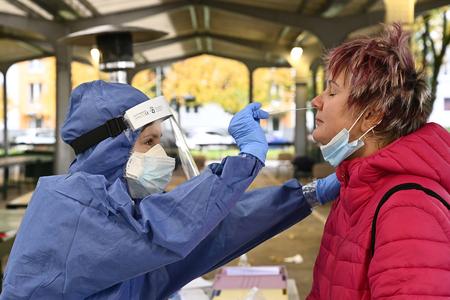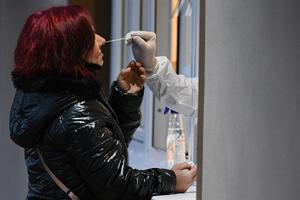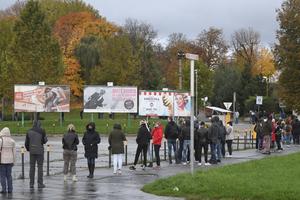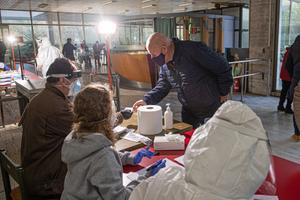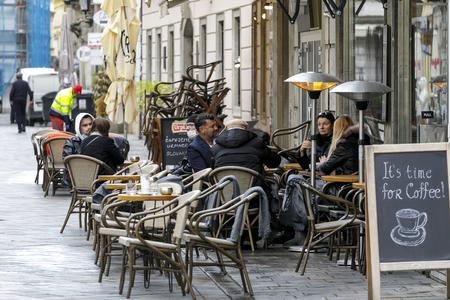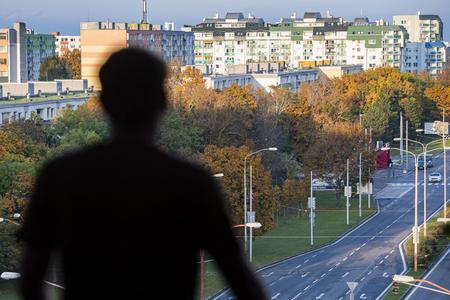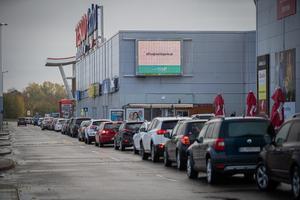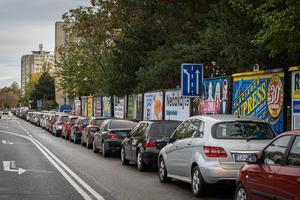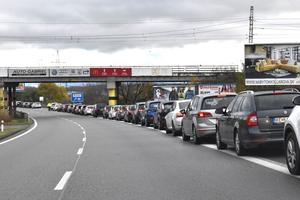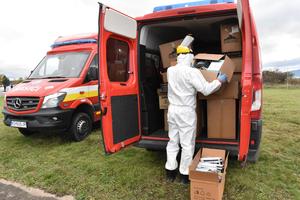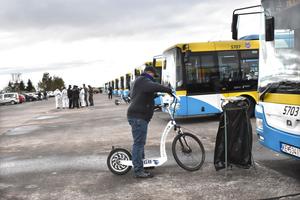This is a special edition of Today in Slovakia on October 31, 2020, the first day of the nationwide coronavirus testing.
Our paywall policy:
The Slovak Spectator has decided to make all the articles on the special measures, statistics and basic information about the coronavirus available to everyone. If you appreciate our work and would like to support good journalism, please buy our subscription. We believe this is an issue where accurate and fact-based information is important for people to cope.
As of 7:00 Saturday morning, Slovakia has been testing people around the country en masse. The nationwide testing is part of the efforts of the Igor Matovič government to minimise the curve of the epidemic, which has been growing exponentially in Slovakia since September, and avoid a hard lockdown.
Not all of the approximately 5,000 testing sites opened on time. The most frequently mentioned problem was the lack of health care staff to do the swabs.
In many places, particularly in Bratislava and Košice, testing points were overwhelmed and people reported hours-long queues. The drive-through testing sites proved to be the most popular, causing traffic jams, particularly in the capital. The Karlova Ves borough closed three of its four testing sites in the afternoon for this reason.
No test will mean self-isolation
PM Matovič stressed that the government was not considering changing the rules for the isolation of people who do not take the test.
On Friday, President Zuzana Čaputová called on the government to reconsider the stricter regime for those who do not get tested, citing the concerns of the armed forces that not everyone would be able to get tested. At that point, the organisers only had enough health care staff for about two thirds of the testing sites. On Saturday morning, Minister Naď said nearly all the testing sites were fully operational, though.
Scrapping the curfew for those who do not take the test would take any sense out of the operation, Matovič said, and added that the president disappointed him with her stance.
Matovič, however, did admit that the second round of the nationwide testing, planned for next weekend, may not be carried out in districts with good numbers from this weekend.
Costs pay off if lockdown is avoided
The operation is costly but pays off, said Finance Minister Eduard Heger (OĽaNO).
He estimated the costs at more than €100 million. A hard lockdown would mean much greater damage.
"The first and the second round together costs approximately as much as one day of hard lockdown would cost," PM Matovič said.
During a hard lockdown, the government would shut down most of the economy with the exception of critical infrastructure.
The Pandemic Commission, a group of epidemiologists, virologists, and other advisors to the government, advised PM Matovič to put the country on a lockdown to flatten the curve of the epidemic in the country. The government insists that the testing can turn out to be an alternative, but Matovič has previously not ruled out that there may need to be a lockdown anyway.
Too early to assess numbers
In the first five hours, by noon, 828,518 had been tested, of whom 7,947 had a positive result, PM Igor Matovič and Defence Minister Jaroslav Naď (both OĽaNO) reported.
Naď said during his afternoon press conference at 16:30 that one million people had been tested by then.
A 1-percent positive rate would be considered a success, but experts say it is too early to draw any conclusions from the first half-day of testing. The percentage of positive tests is even lower in Bratislava and Trnava regions in western Slovakia.
Help from Austria and Hungary
More than 40,000 people are participating in the nationwide testing on the organisational side, of whom more than 6,000 are professional soldiers and 5,000 are police officers, Naď reported.
Slovakia also received help from the Austrian armed forces, which sent 33 medics, and Hungary, which sent 200 health care staff to do the swabs.
The health care staff from Hungary have been distributed among the testing sites in the southern-Slovak districts of Trebišov (44 people), Komárno (138 people), Nové Zámky (10 people) and Levice (one person), the Defence Ministry reported.
More than half a million tests have been delivered to critical infrastructure, large companies who test their workers on-site, and care homes for the elderly.
Interest from the UK
Advisers to the British Prime Minister Boris Johnson met with Defence Minister Jaroslav Naď earlier in the day to inquire about the experiences and advice about the mass testing project.
"They are big fans of ours and they appreciate our determined and demanding, but necessary, step," Naď wrote on Twitter after the meeting.
Lots of waiting but few incidents
Interior Minister Roman Mikulec (OĽaNO) said during the press briefing that there have been very few incidents.
One incident occurred in the village of Čeladince in Nitra Region, western Slovakia. A local who tested positive ignored the order to go into home isolation and returned to the testing site to have another go. He tested positive again.
"The testing staff realised that they had dealt with this person once before," the Police Corps spokesperson Michal Slivka said, as quoted by the SITA newswire. The man faces charges.
Some municipalities have reported a lack of material and equipment. Some ran out of testing kits faster than expected after people from larger towns opted to get tested in smaller villages in the hope of avoiding long queues. This turned out to be a problem in some villages in the Považská Bystrica district, as TASR newswire reported.
Positive homeless people have a place to go in Bratislava
The Bratislava authorities opened a quarantined town for homeless people on Hradská Street. It can house 28 people.
"There have fortunately been no persons with a positive result among the homeless as of yet, but in case there are any, they will be brought here," Mayor Matúš Vallo wrote on Facebook.


